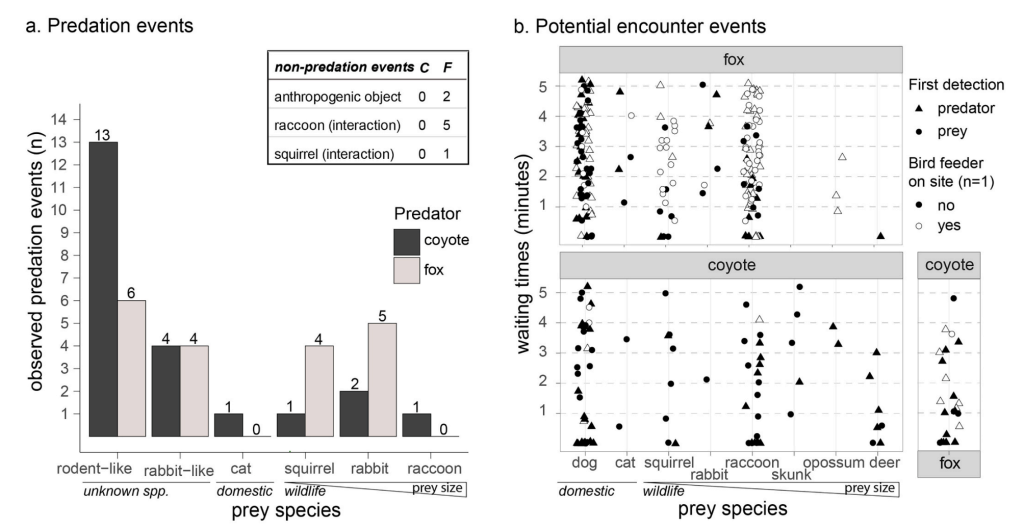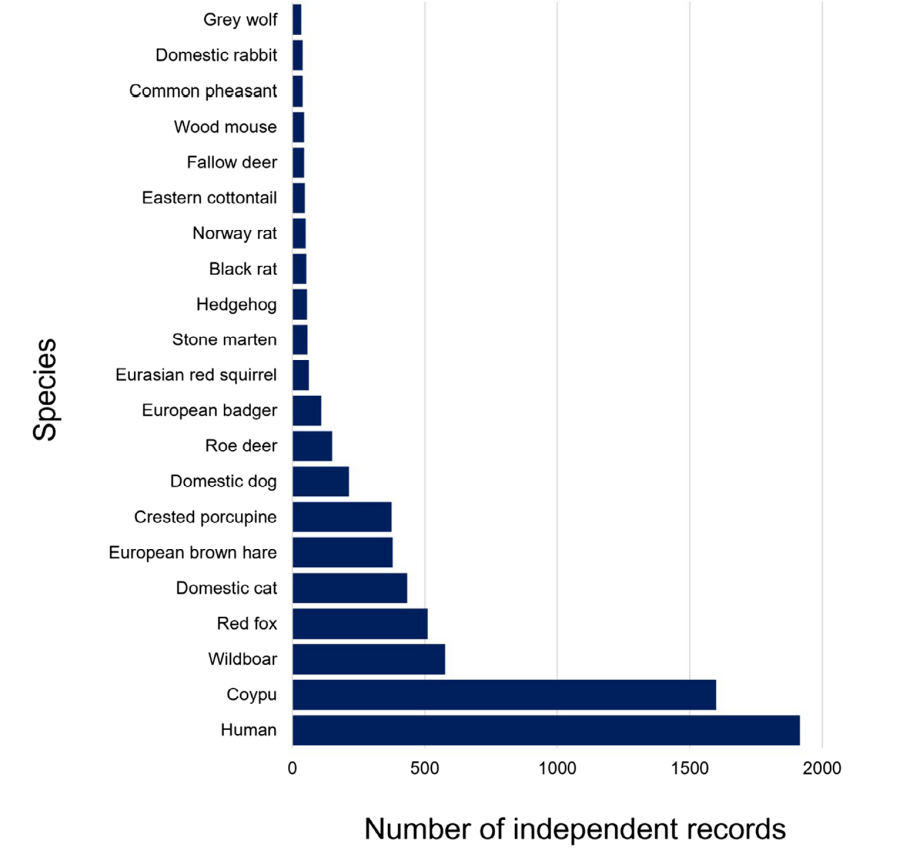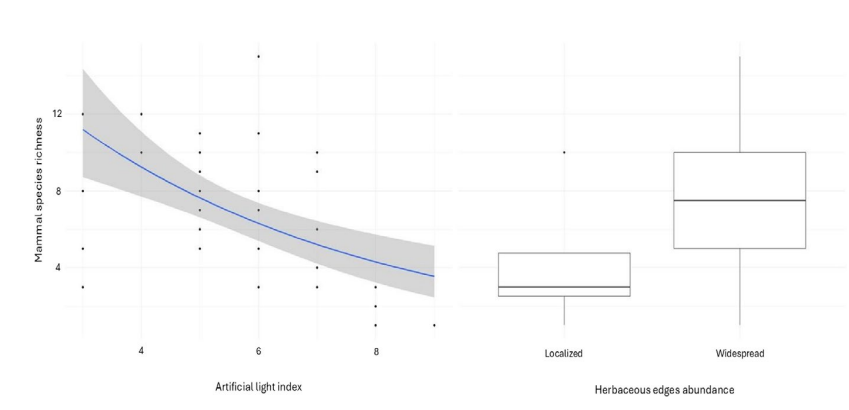Overview
This study focuses on investigating the diet composition of red foxes (Vulpes vulpes) living in urban areas in northern Japan. Red foxes rely on varying food sources, including several types of small mammals and fruits. This study suggests that the home range of urban foxes can be around 30 hectares, so they have a large area to forage for food in. This paper looked at the types of small mammals that the urban foxes were consuming by analyzing scat samples. The species of animals being consumed by urban foxes was determined by extracting DNA from the scat samples that were collected. The advantages of fecal DNA analysis include non-invasiveness, ease of collection, and high accuracy. The goal of this analysis is to understand the diet of urban red foxes in northern Japan, specifically what animals they are consuming.
Methods:
The ‘urban areas’ that were included in this study had to be considered densely inhabited districts by the Statistics Bureau of Japan. The ‘suburban areas’ in this study were areas that were in the city but outside of densely inhabited districts. One challenge for sample collection was distinguishing the scat of urban foxes from that of other species such as dogs. This was solved by using polymerase chain reaction (PCR) to test for primers that were specific to red foxes. This allowed the researchers to ensure that their samples were actually coming from urban foxes. The researchers also had to develop PCR primers for the species they were testing for in the red fox scat. The wild species that had PCR primers developed for them were gray red-backed vole, Hokkaido red-backed vole, northern red-backed vole, large Japanese field mouse, small Japanese field mouse, brown rat, house mouse, Eurasian red squirrel, Siberian chipmunk, mountain hare, and sika deer. Additionally, the researchers also used PCR primers to test for the presence of livestock species in the urban fox scat (cattle, pig, and chicken). The development of the PCR primers for prey species was essential for allowing the researchers to analyze the scat samples from the urban foxes.
Results:
In total there were 110 scat samples collected, and 78 of them were determined to come from red foxes (these 78 were used for the analysis). The wild mammals that were tested for were found in 47.4% of the samples. The gray red-backed vole was the most commonly detected wild mammal species, and it was found in both urban and suburban samples. Other commonly detected species were the brown rat and the large Japanese field mouse. Interestingly, the mountain hare, house mouse, Hokkaido red-backed vole, northern red-backed vole, and small Japanese field mouse were not found in any of the samples that were collected. When looking at the dietary composition of livestock, chicken was most commonly found in the scat samples (56% of samples contained chicken). Pig was also commonly found in the samples (29% of samples contained pig). Although cattle were not found as commonly, the total frequency of livestock in the urban fox scat samples was 61.5%. Additionally, multiple prey species were found in 38% of the samples.
Reflection/Critiques:
Wild mammals play an important role in the diet of urban red foxes in the study area. The primary wild mammal prey species for urban foxes in this area was determined to be the gray red-backed vole. This was supported through wild mammals being found in 47.4% of samples and the gray red-backed vole being found in 30.2% of samples. Although it is possible that the urban foxes were feeding in different areas than where they were dropping feces, the researchers concluded that this was unlikely due to the home range size of the red foxes. The brown rat was also found to be an important dietary component for the urban foxes. This was likely due to the high abundance of this species in cities (brown rats can take advantage of the urban environment). Sitka deer was only found in one scat sample. This was likely from a scavenged carcass since sitka deer are a much larger mammal species. Overall, wild mammal species are an integral part of the diets of urban red foxes in the study area.
Livestock species were found in a larger percentage of the fecal samples for urban red foxes when compared to wild mammal species. According to this study, livestock species were found in 61.5% of the collected scat samples. This suggests that livestock species play a crucial role in supporting the diet of urban foxes. It is likely that this dietary component was primarily sourced from human garbage due to the urban location. The livestock species that was most commonly found in urban fox diets was chicken. This is likely due to it being frequently discarded in garbage. This area of Japan has higher average pork consumption when compared to cattle. This explains why pork was found more frequently in urban fox scat when compared to cattle. Overall, anthropogenic food sources are very important to the diets of urban red foxes in the study area.
The primary critique I have for this study is the relatively small sample size of urban red fox scat. The researchers only analyzed 78 scat samples. If the number of samples were increased, then the conclusions that the study found would be more reliable. The researchers could have greater confidence in the new discoveries regarding the dietary composition of urban red foxes in the study area. Although this would have required more input, the researchers had a reliable method to distinguish the red fox scat from other species.
Another critique for this study is the choice to collect samples without any way of identifying which individual fox they came from. This could have an impact on the data if multiple samples were collected from the same individual fox. It would be beneficial to have a method of quantifying the number of different individual foxes that contributed samples to the study. It would also be beneficial to know the number of samples that came from each individual fox. This would improve the analysis since the diet of each individual is variable and unique. Although this would improve the study, it is likely not practical. Monitoring individual foxes would be difficult, time consuming, and costly. It would also be difficult to attribute particular scat samples to individual foxes.
Reference:
Waga, D., Amaike, Y., Nonaka, N., & Masuda, R. (2025). Identification of mammal species preyed upon by urban foxes (Vulpes vulpes) in Sapporo, Japan, determined by fecal DNA analysis. The Journal of veterinary medical science, 87(8), 960–965. https://doi.org/10.1292/jvms.25-0199










